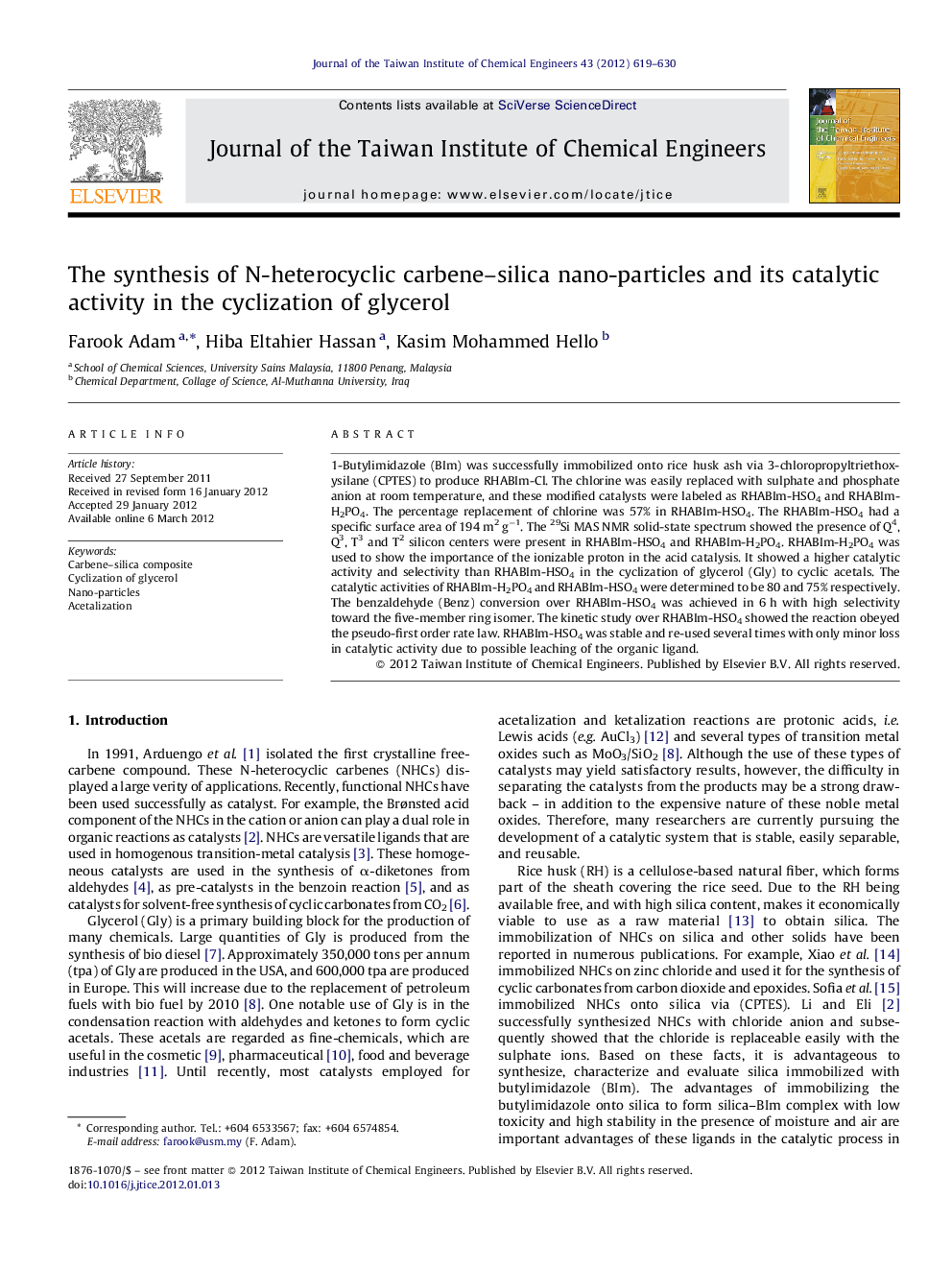| Article ID | Journal | Published Year | Pages | File Type |
|---|---|---|---|---|
| 691227 | Journal of the Taiwan Institute of Chemical Engineers | 2012 | 12 Pages |
1-Butylimidazole (BIm) was successfully immobilized onto rice husk ash via 3-chloropropyltriethoxysilane (CPTES) to produce RHABIm-Cl. The chlorine was easily replaced with sulphate and phosphate anion at room temperature, and these modified catalysts were labeled as RHABIm-HSO4 and RHABIm-H2PO4. The percentage replacement of chlorine was 57% in RHABIm-HSO4. The RHABIm-HSO4 had a specific surface area of 194 m2 g−1. The 29Si MAS NMR solid-state spectrum showed the presence of Q4, Q3, T3 and T2 silicon centers were present in RHABIm-HSO4 and RHABIm-H2PO4. RHABIm-H2PO4 was used to show the importance of the ionizable proton in the acid catalysis. It showed a higher catalytic activity and selectivity than RHABIm-HSO4 in the cyclization of glycerol (Gly) to cyclic acetals. The catalytic activities of RHABIm-H2PO4 and RHABIm-HSO4 were determined to be 80 and 75% respectively. The benzaldehyde (Benz) conversion over RHABIm-HSO4 was achieved in 6 h with high selectivity toward the five-member ring isomer. The kinetic study over RHABIm-HSO4 showed the reaction obeyed the pseudo-first order rate law. RHABIm-HSO4 was stable and re-used several times with only minor loss in catalytic activity due to possible leaching of the organic ligand.
